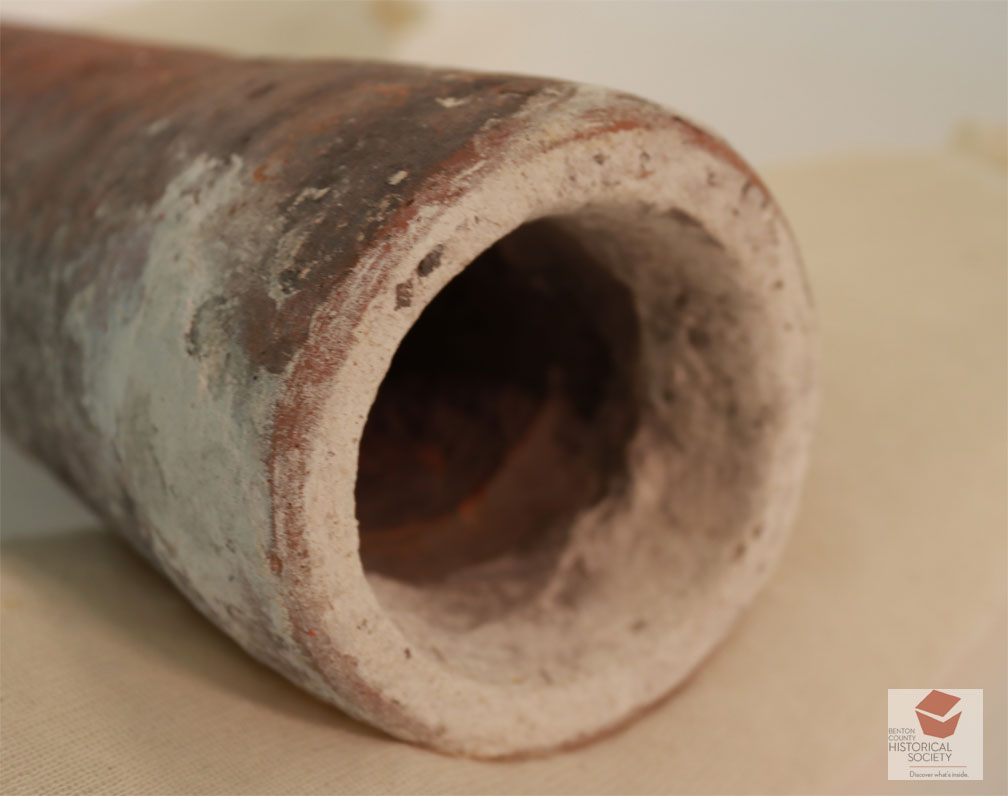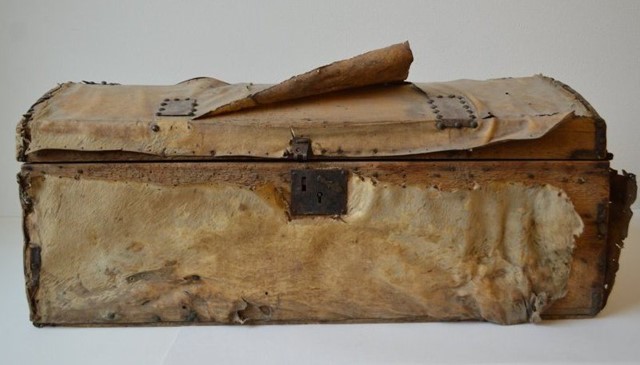Getting water from its source to use first involved carrying heavy pails full of water. Eventually, pipes were laid to bring the water to the users. The current exhibition, “Water Works,” at the Benton County Historical Society’s Philomath Museum has on display a section of redwood pipe once used to carry water from Rock Creek to Corvallis. In other places, different materials were used to make the pipes.

The object in the photographs is a fragment of a terracotta pipe used in the construction of the La Purisima Mission near Lompoc, California in 1788. The mission buildings were arranged in a quadrangle with a fountain in the middle. Spring water was filtered through sand and then carried about a mile by underground by pipes like this to the fountain.
Clay pipes have been used to carry water and/or wastes in Babylonia as early as 4000 BCE. Clay pipes fired in a kiln to create a ceramic-like surface are known as vitrified clay or terracotta. Such pipes were used extensively until the 1960s and 1970s when they began to be replaced by various types of plastic pipes. Some are still in use as terracotta pipes can list at 50 to 60 years. They are particularly resistant to cracking caused by downward pressure.
The La Purisima Mission, known for its hides and blankets, was destroyed by an earthquake in 1812 but rebuilt on a new site a few miles away from the original. That site has been restored and is currently open as a living history museum.



